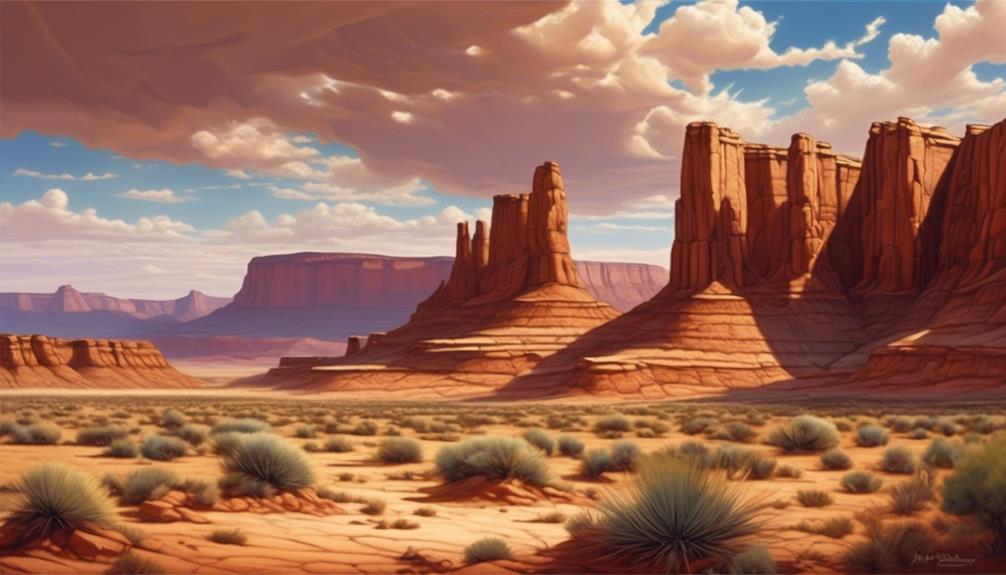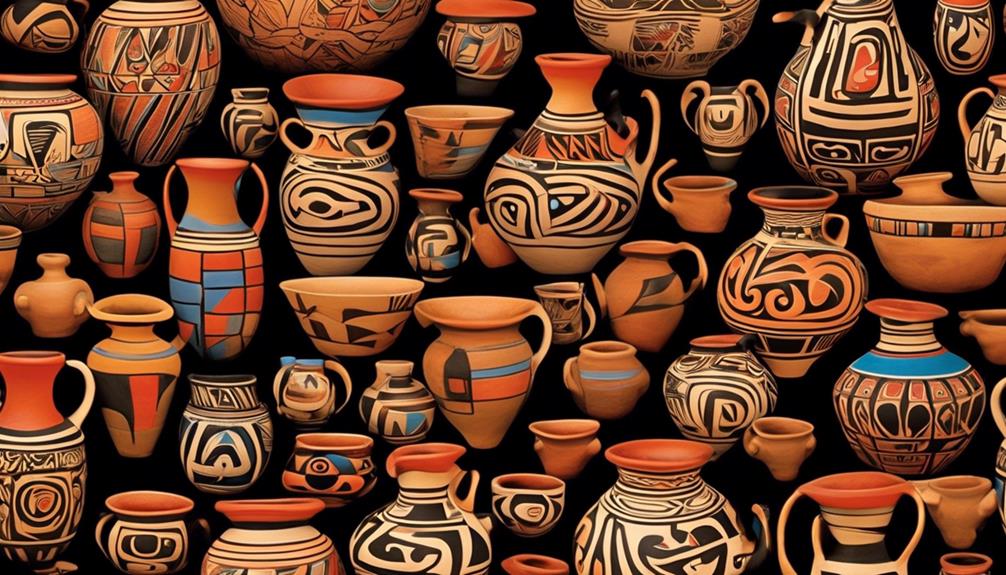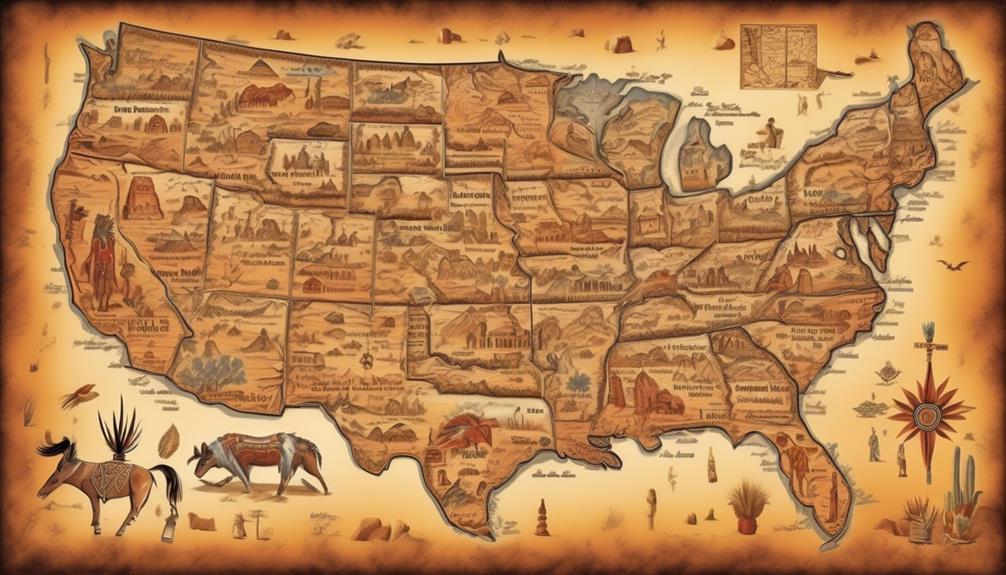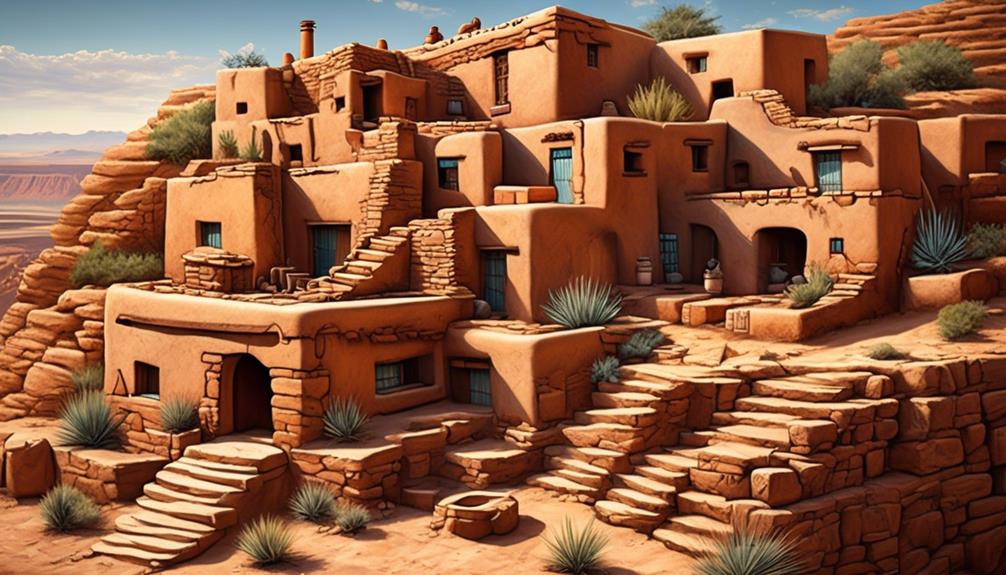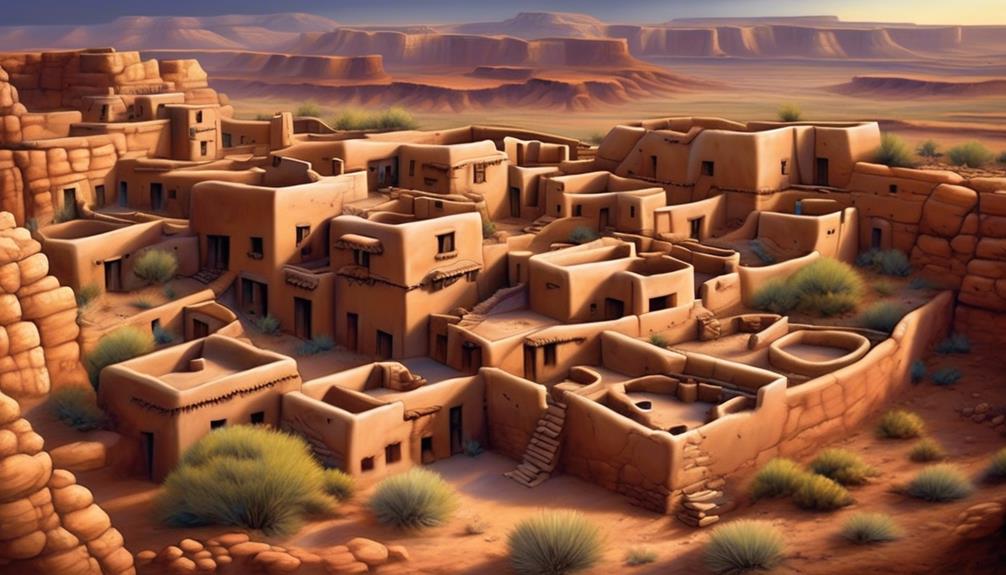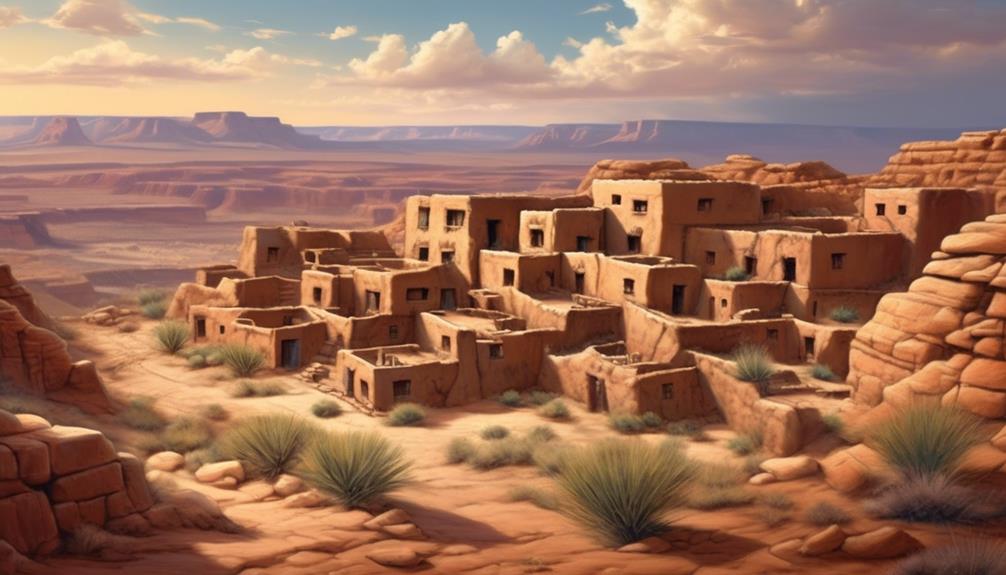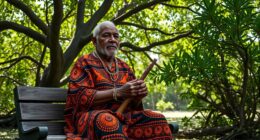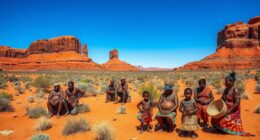In the vast terrain of the American Southwest, enveloped by the high desert, lie the ancestral lands of the Hopi Native American tribe.
The location of this tribe is not just a matter of geography, but a story of cultural resilience and enduring traditions.
As we consider where the Hopi Indian tribe is located, we uncover a landscape that holds both historical significance and contemporary importance.
The question of their whereabouts reveals not just a physical location, but also a deep connection to the land and its spiritual significance.
Key Takeaways
- The Hopi Reservation is located in northeastern Arizona, encompassing over 2,500 square miles of land.
- The reservation is home to the Hopi Indian Tribe and is characterized by three mesas – First Mesa, Second Mesa, and Third Mesa.
- Traditional ceremonies, such as Niman Kachina and Soyal ceremony, are integral to the Hopi cultural identity and are conducted throughout the year.
- Hopi agricultural practices, including terraced fields and dry farming techniques, have been passed down through generations and are essential for sustaining customs and beliefs.
The Hopi Reservation
Located in northeastern Arizona, the Hopi Reservation is home to the Hopi Indian Tribe, encompassing over 2,500 square miles of land. Nestled atop three mesas—First Mesa, Second Mesa, and Third Mesa—the reservation is a place of profound cultural significance for the Hopi people. The Hopi culture is deeply rooted in their connection to the land, and the reservation serves as the heartland for the preservation of their traditions and way of life.
Within the boundaries of the reservation, the Hopi people continue to uphold their traditional ceremonies, which are integral to their cultural identity. These ceremonies are conducted throughout the year and are essential for maintaining the balance and harmony of the Hopi world. From the intricate rituals of the Niman Kachina to the solemnity of the Soyal ceremony, each event is a testament to the enduring strength of Hopi traditions.
Moreover, the reservation provides the physical space for the Hopi people to engage in agricultural practices that have been passed down through generations. The land isn't merely a geographical area; it's a living embodiment of the Hopi culture, sustaining their customs and beliefs.
Northeastern Arizona

The vast expanse of northeastern Arizona extends beyond the boundaries of the Hopi Reservation, offering a diverse landscape and a rich tapestry of cultures and histories waiting to be explored. This region is characterized by its stunning natural beauty, with the iconic red rock formations of Monument Valley and the striking canyons of Canyon de Chelly. But beyond its physical allure, northeastern Arizona is also a place steeped in Native American culture and history, offering a deep dive into the traditions and lifeways of the indigenous peoples who've called this region home for centuries.
- Native American Tribes:
- The Navajo Nation, the largest Native American tribe in the United States, has a significant presence in northeastern Arizona, with their reservation sprawling across the region.
- The Zuni, Apache, and other tribal communities also contribute to the rich tapestry of native culture in this area.
As we venture through northern Arizona, the influence of Native American culture is palpable, from the vibrant art and crafts to the enduring connection to the land. This is a land where ancient traditions intertwine with the modern world, offering a unique and enriching experience for those seeking to understand and appreciate the depth of native culture.
High Desert Landscape
Nestled within the northeastern Arizona landscape, the high desert unfolds with a captivating blend of rugged terrain and sparse vegetation, shaping a unique environment shaped by relentless sun and scarce rainfall. The arid landscape of the high desert presents challenges and opportunities for the Hopi Indian Tribe.
Despite the harsh conditions, the Hopi have developed ingenious agricultural techniques to sustain their communities. Their traditional farming methods, including terraced fields and dry farming, showcase their deep understanding of the desert's nuances. The high desert's elevation also impacts the availability of water, influencing the location of Hopi villages and the types of crops grown.
The traditional dwellings of the Hopi, known as pueblos, reflect a deep connection to the land and a profound understanding of the desert's demands. Constructed from sun-dried adobe bricks and stone, these multistory structures provide insulation from the extreme temperatures and offer a sense of sanctuary within the harsh desert environment. The architecture of these dwellings embodies the Hopi's resilience and adaptation to the high desert landscape, serving as a testament to their enduring cultural heritage.
Ancestral Lands
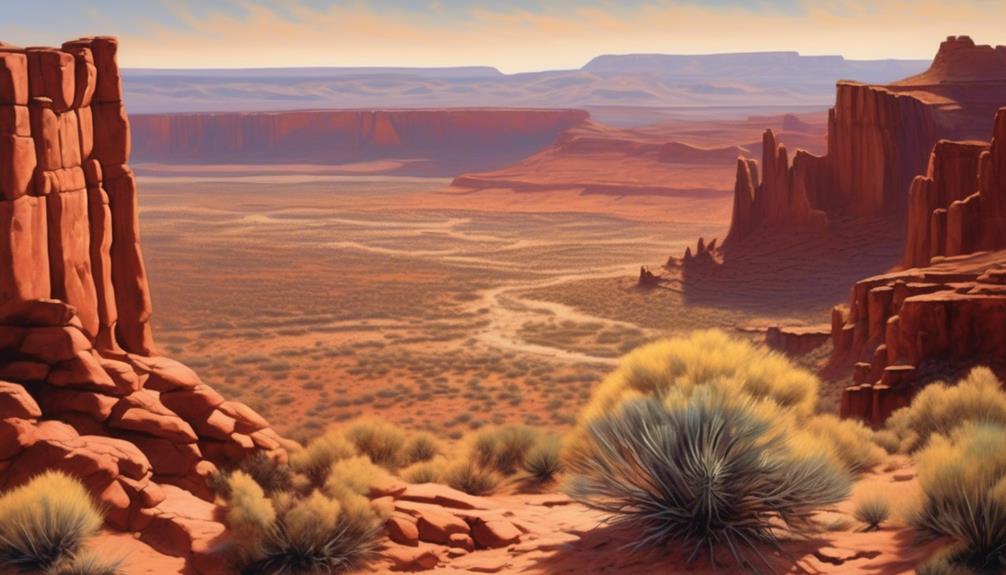
Spanning across the arid high desert of northeastern Arizona, the ancestral lands of the Hopi Indian Tribe hold centuries of cultural significance and spiritual connection to the earth. These lands aren't just physical spaces; they're repositories of our history, traditions, and beliefs. The preservation of these ancestral lands is crucial for the continuity of our cultural identity and the well-being of our community.
- Cultural Continuity:
Our ancestral lands serve as the physical embodiment of our cultural heritage, containing sacred sites, petroglyphs, and archaeological remnants that connect us to our ancestors. The continuity of our culture depends on these tangible links to our past, which are irreplaceable and invaluable.
- Environmental Stewardship:
Our stewardship of the ancestral lands is a fundamental aspect of cultural preservation. We've a deep spiritual relationship with the earth, and our traditions emphasize sustainable practices and respect for the natural world. Protecting these lands isn't only a matter of cultural preservation but also a commitment to environmental conservation.
These lands aren't just geographic locations; they're the living essence of our cultural identity. As we strive to safeguard our ancestral lands, we aren't only preserving our heritage but also upholding our responsibilities to future generations.
Geographical Significance
In our exploration of the geographical significance of the Hopi Indian Tribe's lands, we discover a terrain teeming with both natural beauty and historical resonance. The geographical history of the Hopi tribe is deeply intertwined with their cultural traditions, shaping their identity and way of life. The mesas and buttes that define the landscape of the Hopi reservation in northeastern Arizona have provided not only a physical home for the tribe, but also a spiritual and cultural anchor. The table below provides a glimpse into the geographical features of the Hopi lands and their significance to the tribe.
| Geographical Feature | Significance to Hopi Tribe |
|---|---|
| Mesas and Buttes | Sacred ceremonial sites and agricultural lands |
| Tso'ona (Springs) | Vital water sources for sustenance and spiritual practices |
| Tawa'ovi (Sun) | Central to Hopi cosmology and agricultural calendar |
| Nuvatukaovi (Mountains) | Places of spiritual significance and connection to ancestral spirits |
The Hopi's deep connection to the land is rooted in their geographical history, which is interwoven with their cultural traditions, ceremonies, and agricultural practices. This unique relationship underscores the profound geographical significance of the Hopi Indian Tribe's lands.
Frequently Asked Questions
What Is the Traditional Language Spoken by the Hopi Tribe?
The traditional Hopi language is a vital aspect of the tribe's cultural identity. It's a complex and rich language that has been passed down through generations, reflecting the deep connection of the Hopi people to their land and heritage.
The Hopi language, also known as Hopílavayi, is an integral part of their ceremonies, oral traditions, and daily communication. Its preservation is essential to the continued resilience and strength of the Hopi tribe.
What Are the Major Industries or Sources of Income for the Hopi Tribe?
Major industries and sources of income for the Hopi tribe include economic development initiatives, such as agriculture and arts and crafts production. These activities not only contribute to the tribe's economic sustainability but also play a crucial role in preserving their cultural heritage.
Additionally, tourism opportunities, like guided cultural tours and traditional events, provide a vital source of income while allowing visitors to experience and appreciate the rich cultural traditions of the Hopi tribe.
How Does the Hopi Tribe Traditionally Govern Themselves?
Traditionally, the Hopi tribe governs themselves through a system of traditional leadership, with decisions made collectively by tribal members. Tribal decisions are often guided by the wisdom of the elders and the input of community leaders.
It's a deeply rooted process that emphasizes consensus and the preservation of cultural values. This form of self-governance reflects the tribe's commitment to maintaining their unique identity and upholding their ancestral traditions.
What Are Some Traditional Hopi Cultural Practices or Ceremonies?
Traditional ceremonies and cultural rituals are integral to Hopi life. These practices encompass various spiritual ceremonies, including the Niman Kachina and Powamu ceremonies, and traditional dances such as the Butterfly Dance.
These ceremonies serve as a means of maintaining cultural heritage and spiritual connections with the land. They're deeply rooted in the Hopi worldview, reflecting a harmonious relationship between the people, their environment, and the spiritual realm.
How Does the Hopi Tribe Interact With Neighboring Tribes or Communities?
In our intertribal relations, the Hopi tribe engages in a rich cultural exchange with neighboring tribes, fostering a deep sense of community.
Our interactions are like a lively marketplace of ideas, where traditions and knowledge flow freely.
The exchange of customs and beliefs enriches our collective identity and strengthens our bonds.
Through these interactions, we celebrate our shared heritage and create a tapestry of diverse traditions that unite us in a spirit of mutual respect and understanding.
Conclusion
In the heart of the high desert landscape of northeastern Arizona, the Hopi Indian tribe resides on their ancestral lands. The land is a tapestry woven with the history, traditions, and spirituality of the Hopi people.
It's a place where the earth speaks, the winds whisper ancient stories, and the vibrant colors of the landscape paint a picture of resilience and strength. The Hopi Reservation is a sacred place where the past, present, and future converge in a timeless dance.
Mary is a passionate writer who brings creativity and a fresh perspective to our team. Her words have the power to captivate and inspire, making her an essential contributor to our content. Mary’s commitment to storytelling and dedication to promoting Indigenous culture ensures that her work touches the hearts of our readers. We’re fortunate to have her as part of our team.
